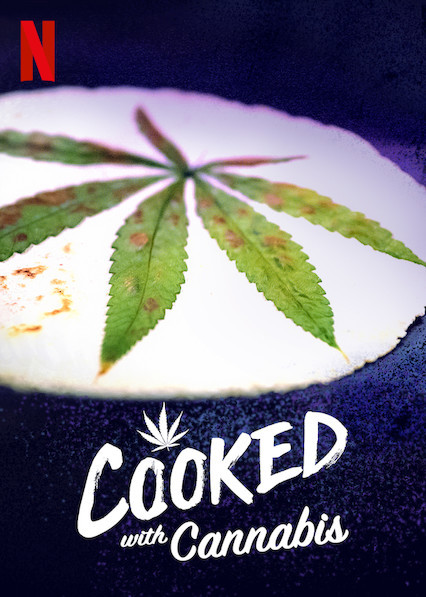REVIEW: Puff, puff … miss

As the cannabis smokers’ holiday rolled around April 20, I was reminded of how much weed culture has grown. From hearing about the legal ramifications of smoking weed in earlier years through documentaries about the ’60s to gradual medical legalization, it is fascinating to see how accepted cannabis has become in our society. Not only is it recreationally legal in several states, but it is now becoming more mainstream and marketable than ever with cannabis-themed shows, restaurants and technologies. Netflix’s “Cooked with Cannabis” is one such product.
“We are able to put something that has been demonized, and that is still not completely legal, and we’re bringing it to the forefront to show that it is not about loser stoners,” said singer-songwriter, chef and host Kelis Rogers in an interview with Entertainment Weekly.
As the title suggests, the “MasterChef”-esque show has chefs compete against one another to create dishes using a shared ingredient: cannabis. The show is hosted by Rogers and weed chef Leather Storrs, while a panel of guest stars also provides commentary and judges the competition, dropping occasional weed-related jokes and remarks.
The hosts and guests oversee three rounds of cooking and taste the weed-infused foods, getting higher after every round from both the food and aroma from cooking. Because of this, the contest becomes rather pointless as the judges get more and more stoned; the show continues, but the judges’ perceptions change as munchies set in and all the food begins to indistinguishably taste good.
To accompany that, the humor from the hosts and guests often falls short. Any mention of cannabis comes in the form of corny, dry jokes that one would expect from a poorly written movie where characters smoke weed and overreact to their high.
Despite the revolutionary aspects of “Cooked with Cannabis,” the show is not so much to further cannabis culture but simply employs a familiar cooking show format and adds a twist.
Kelis claims she wants to remove the stigma surrounding weed yet emphasizes one of the biggest stigmas by portraying “loser stoners” as a negative image. Also, the cannabis knowledge shared on screen is nowhere near the level of depth a series like this should display.
There were over six million arrests relating to cannabis between 2010 and 2018 according to the ACLU, most of them having to do with possession. Mention of the MORE Act, which details plans for national legalization, would also greatly benefit the cannabis community as a whole but the hosts and guests fail to mention any of this. This is the kind of discourse expected from a modern cannabis-themed show, yet the hosts and guests never dive into any kind of informative conversations regarding cannabis and legalization.
Many companies use the 4/20 holiday to raise awareness about the continuous legal problems involving cannabis in the United States. According to a report by the ACLU, Black people are 3.6 times more likely to be arrested for cannabis-related offences compared to white people nationwide. Ben and Jerry’s Pecan Resist campaign highlights this legal disparity, an example of how a show like “Cooked with Cannabis” can use its platform to bring more light to important issues like this rather than simply attack stigmas.
Instead, they just sit back, get high and wait for free food. If you don’t care to learn about cannabis history and culture, then this might be the show for you, but the overall gentrified portrayal of cannabis in mainstream media is lackluster.
It’s sobering to see the guests take the competition less seriously as they get higher. If you’re not getting high alongside them, or even if you are, it’s not enjoyable to watch these people act foolishly in the background. Even the contestants themselves often seem relaxed and aren’t even sure about how much THC they end up using in some of their creations.
The only positive take away from the show is the culinary creations the chefs are able to make using different cannabis-infused ingredients. The “Smash Burger” with mimosa-infused charred poblano butter that contains around 2 milligrams of THC is something I definitely wouldn’t mind trying; the watermelon cocktail with THC powder-infused elderflower also sounds appetizing. These meals and drinks are innovative and show a glimpse of new ways of integrating cannabis into food. The commentary, lead up and basically anything but the food presentation, however, is simply not worth it.
While this show doesn’t do much for cannabis culture as a whole, it is exciting to see cannabis become more commonplace and celebrated on a day like 4/20.


